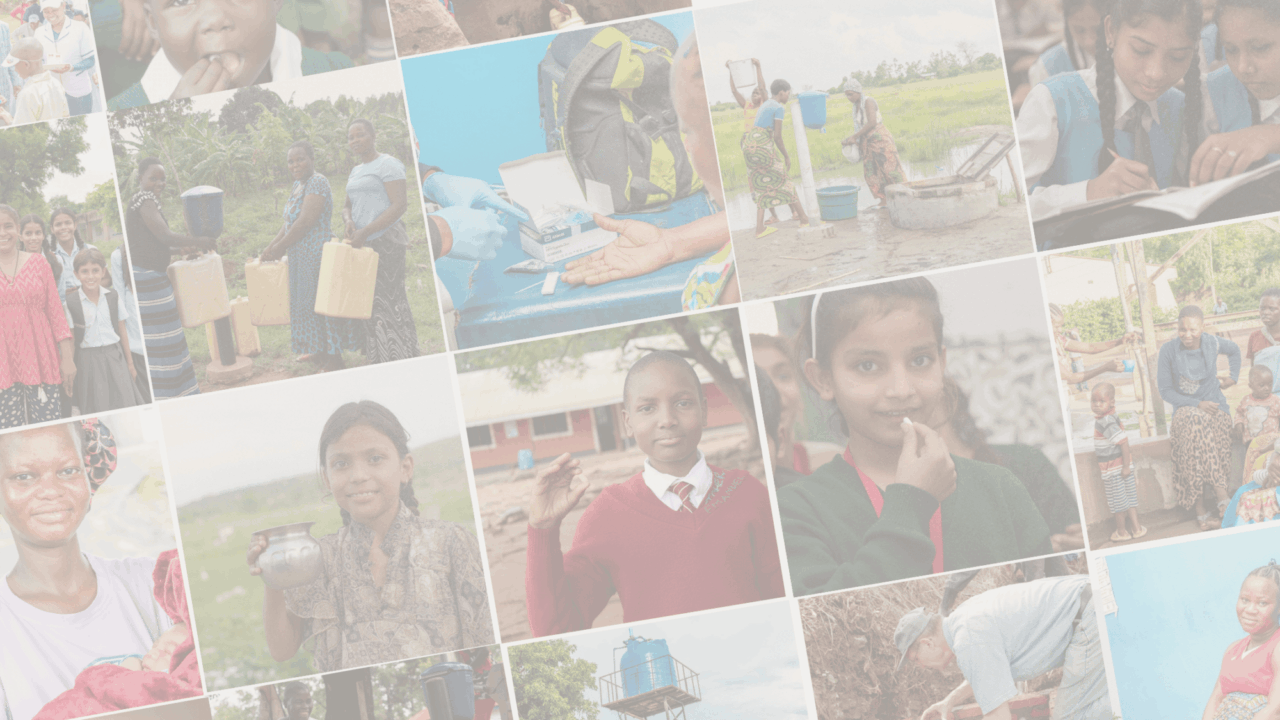Editor’s Note: This post was originally published on June 22, 2018 as the first of two blog posts for The Stone Family Foundation. The original post can be found here.
Dispensers for Safe Water prevents waterborne illness by providing access to safe drinking water in rural East Africa by installing chlorine dispensers next to community water points.
What started as a pilot of 20 dispensers in western Kenya in 2007 has since grown to 27,500 dispensers serving 4 million people across Kenya, Uganda, and Malawi today (a population equivalent to the city of Los Angeles).
Why Evidence Action chose to scale the programme
The evidence for the programme is clear. Chlorination is proven to kill the microorganisms in water that cause illnesses such as diarrhoea, and a series of randomised controlled trials demonstrated that dispensers achieved by far the highest take up of chlorine among beneficiaries compared to other interventions.
Additional research by MIT’s Jameel Poverty Action Lab (J-PAL) shows that dispensers are the most cost-effective water treatment intervention they evaluated, and the programme was further endorsed for its cost-effectiveness as a Standout Charity by GiveWell in 2017.
Given the strength of the evidence and the intervention’s cost effectiveness, we chose to scale it up.
Today, we employ a staff of 150 people on the ground to serve our footprint of 27,500 dispensers, and we rely upon a network of 50,000+ community volunteers, known as “promoters”, to refill each dispenser and consistently engage their communities on the importance of safe drinking water.
Here are four important lessons we learnt both during scale up and our ongoing operations.
1. Build a “system” that is quickly and easily replicable
We established guidelines for each step of the dispenser lifecycle, beginning with initial stakeholder engagement through to on-going dispenser maintenance and refill delivery.
This system allows new staff to quickly become trained on our process, ensuring service standards are maintained for the 4 million people who rely on our dispensers.
2. Use observation and experience to adapt
Our dispenser design has evolved over time. Wear and tear on older designs prompted us to adapt the design to withstand natural (eg, weather) and human-caused (eg, repeated use) pressures.
We previously used trucks to deliver refills to each dispenser, but hard-to-reach locations with minimal access to roads posed an obstacle, and trucks require high upfront investment and are expensive to maintain.
We changed to a fleet of motorcycles and hired a staff of 70 local “circuit riders” who can access these remote dispensers and reach more dispensers in the same amount of time at lower cost.
3. Monitoring data is crucial for supporting successful scale up
Our monitoring and evaluation team built a system that could withstand the pressures of scale-up, allowing us to collect and act upon real-time data. It is because of this data, in conjunction with our last-mile operations footprint, that we could both identify a performance decline and address it quickly.
In 2015, we noticed adoption rates drop in Uganda and quickly diagnosed the root cause—a rumour spreading among villages that chlorine causes male sterility.
We were able to rapidly combat this misperception through community outreach and radio campaigns, which drove an increase in adoption rates within months.
4. Maintain depth of engagement with all stakeholders
We place a heavy emphasis on stakeholder engagement, from county-level government officials to the children in communities who may fetch their household’s drinking water.
As with any development programme, it is important to ensure buy-in on the need for the intervention, the process by which it is introduced, and the on-going responsibilities of all parties.
The breadth of this requirement greatly increases when scaling, but the depth of engagement must be retained.
Combining strong evidence and a robust delivery model
Our operations today benefit from the knowledge we gained during the scale up of Dispensers for Safe Water, both through trial and error and through forward-thinking design and planning.
While any programme will face new and ongoing challenges, we have built a strong foundation for continued success in providing clean water that saves the lives of hundreds of children every year.



